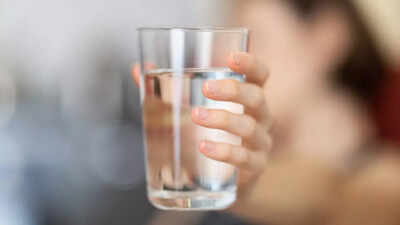
Hyponatremia occurs when the blood’s sodium levels drop dangerously low due to excessive water intake. Sodium is essential for nerve function, muscle movement, and fluid balance. When hyponatremia develops, cells swell, which can impact organs, especially the brain, and cause serious complications.A study in the New England Journal of Medicine on Boston Marathon runners shows that even healthy athletes can develop hyponatremia when water intake exceeds the body’s ability to maintain sodium balance.Even seemingly healthy individuals can develop hyponatremia if they drink more water than their kidneys can excrete or do not replace lost electrolytes during intense activity.
What is hyponatremia and how does it happen
Hyponatremia is a condition characterized by low sodium levels in the blood, often triggered by excessive fluid intake. It disrupts normal body function, leading to swelling in cells and increasing pressure in the brain. Understanding how hyponatremia occurs helps in preventing serious consequences.
Early signs of hyponatremia
Recognizing hyponatremia early is critical. Common warning signs include:
- Headache
- Nausea or vomiting
- Fatigue or weakness
- Confusion or poor concentration
- Muscle cramps
- Swelling in hands, feet, or face
Severe cases of hyponatremia can result in seizures, fainting, or loss of consciousness. Immediate medical attention is essential if symptoms appear after excessive water intake.
Who is most at risk of hyponatremia
- Endurance athletes: Runners, cyclists, and swimmers consume excessive water during events.
- Outdoor workers: Individuals exposed to heat who drink too much water to cool down.
- People following extreme hydration advice: Consuming large amounts of water for detox or beauty purposes.
- Individuals with kidney or heart issues: Their bodies cannot manage fluid efficiently.
Safe water intake to prevent hyponatremia
Recommended water intake depends on age, sex, climate, and activity. Adults typically need 2.5 to 3.5 liters daily. Drinking according to thirst and checking urine color are practical ways to prevent hyponatremia. Spread intake throughout the day and include electrolytes when sweating heavily.
Hydration tips to avoid hyponatremia
- Include electrolytes: Coconut water, buttermilk, or oral rehydration solutions restore sodium and potassium.
- Hydrating foods: Watermelon, cucumber, and oranges contribute to fluid intake.
- During exercise: Use electrolyte drinks instead of plain water during prolonged physical activity.
- Medical supervision: People with kidney, heart, or liver issues should follow professional fluid recommendations.
What to do if hyponatremia develops
If confusion, nausea, or seizures occur after heavy water intake, seek emergency care immediately. Treatment often involves carefully restoring sodium levels and controlling fluid intake. Avoid self-treating with salt at home, which can worsen the condition.Hyponatremia is rare but serious. Knowing the symptoms, prevention strategies, and risk groups is essential for safe hydration. Spread water intake throughout the day, include electrolytes, and listen to your body’s signals. Proper hydration ensures water remains life-saving rather than life-threatening.Disclaimer: This article is for general informational purposes only and is not a substitute for professional medical advice, diagnosis, or treatment. Always seek the guidance of a qualified healthcare provider regarding any medical condition or lifestyle change.Also read| How often can you drink alcohol without risking cancer, heart, or brain damage







